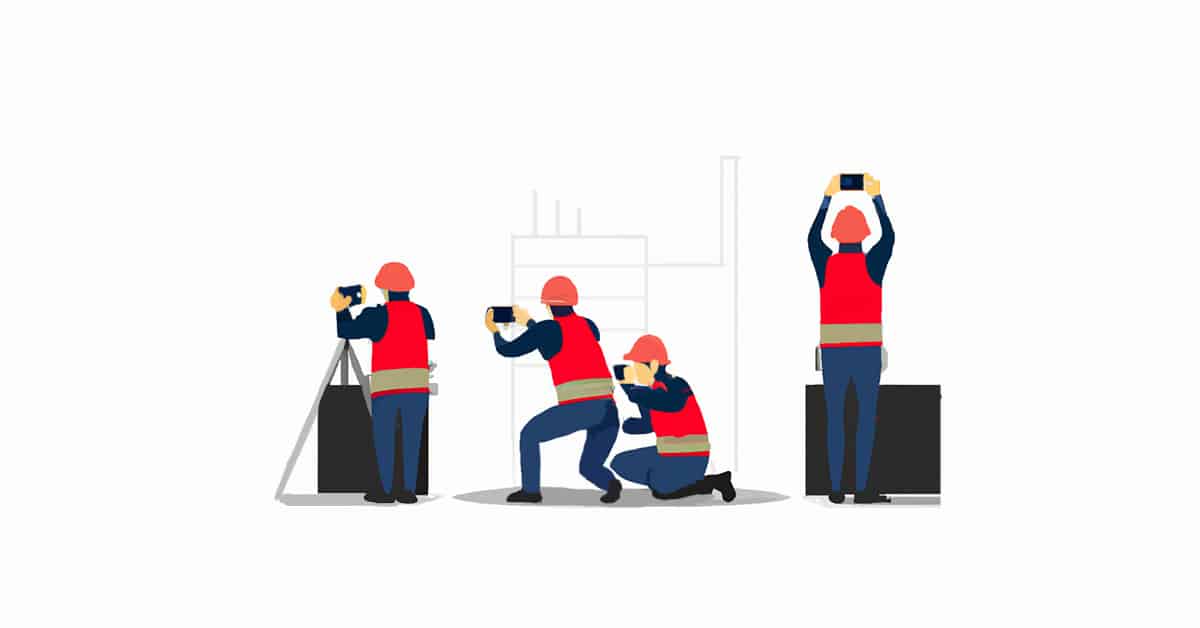Home Construction Management Construction Photo Documentation
Construction Photo Documentation: The Easy Way
Use construction photo documentation to track worksite progress. Produce audit trails, check in with customers, and remain under budget with these important tips.

It can be difficult to track worksite progress, especially if you don’t have supervisors on site. Construction photo documentation provides many benefits, including audit trails, customer check-ins, and progress tracking.
Protect yourself and your crew, track construction site progress, and get ahead of problems before they get worse. Let’s look at the major benefits of construction photo documentation—and tips for tracking construction progress.
The Benefits of Construction Photo Documentation
First, before we talk about other tips for tracking construction site progress, let’s dig deeper into the benefits of construction photo documentation.
More than just text and tasks, construction photo documentation provides greater levels of visibility into the current status of a given project.
Audit Trails | Construction photo documentation creates an audit trail, a complete path that documents the progress of your project and potentially highlights any issues. Go back and review what has been done and by whom. If clients have complaints, use audit trails to provide evidence. |
Customer Check-Ins | Regularly scheduled customer check-ins are a great way to keep them updated on the progress of their project. Customers appreciate being kept in the loop, and it helps to solidify the working relationship. Better check-ins will also reduce the potential for costly reworks. |
Progress Tracking | In addition to providing an audit trail and regular customer check-ins, construction photo documentation is also a great way to track progress. Ensure that the project is on schedule and that issues are caught early. Identify large projects that may be potentially lagging behind schedule. Properly schedule multiple projects based on the current status. |
Site Evidence | Construction photo documentation provides evidence of the condition of the site when you arrived and when you left. Head off issues with damage or theft—and prove that your employees did their job right. This is especially important if you’re working with multiple contractors and subcontractors. |
Billing Purposes | Photo documentation on construction projects also protects you and the client for billing purposes. By documenting the project with pictures, you can more easily and accurately reference progress or setbacks and bill accordingly. |
Workyard’s task management system is the perfect complement to construction photo documentation. With Workyard, you can assign tasks, set due dates, and track progress—including both text and photo documentation.
Tips for Tracking Construction Progress With Photos
Now that we’ve covered the benefits of construction photo documentation, let’s take a look at some tips for tracking progress with photos — without adding unnecessarily to your workload.
1. Take Photos Regularly
Every time a task is completed, it should be documented. Get employees on board with snapping a photo every time they finish a task—once built into your processes, it will become automatic. You don’t need to take a photo of every single thing that happens on the site, but you do need photographic evidence of major milestones.
Stress to employees that it helps them as much as it helps you. They can prove that they did the job right and protect themselves against damage that may occur after they leave the site.
2. Connect Photos to Tasks
Workyard’s task management system makes it easier to associate photo documentation with the project’s tasks, milestones, and timelines. Every employee will have a photo documentation system in their pocket. When they mark a task completed, they can upload photo evidence.
Even better, you can view the photographs from anywhere—just like having an on-site supervisor.
3. Keep Photos Organized
In addition to keeping photos in a task management system, keep them organized by client and chronology. If you need to look up the last status of a project, you should be able to do that within just a few minutes.
Workyard will consolidate your photos—every client within a single app. Employees won’t need to jump through multiple files or folders to find the photos they need, and you can produce reports as needed.
4. Review Photos Regularly
Schedule the time you need to review photos. You’ll spot issues earlier and be able to keep the project on track. As you review photos, send notes to employees regarding anything that you don’t understand. In construction, the faster you notice an issue, the faster you can resolve it—and the less likely the issue will be to be costly.
Construction photo documentation is a great way to track progress and protect yourself from liability—without having to have a supervisor constantly on site. By following these tips, you can ensure that your project stays on track and that you have the evidence you need to back up your clients’ progress.
Workyard and Construction Photo Documentation
Workyard’s task management and construction photo documentation features help you streamline your workflow, track progress on your construction site, and avoid going over budget. By using these critical documentation tools, you can save time and money while ensuring that your progress remains on track.
Want to learn more? Workyard has much more to offer than just documentation—it’s an all-in-one, easy-to-use, workforce management platform. Check out a free trial of Workyard today.